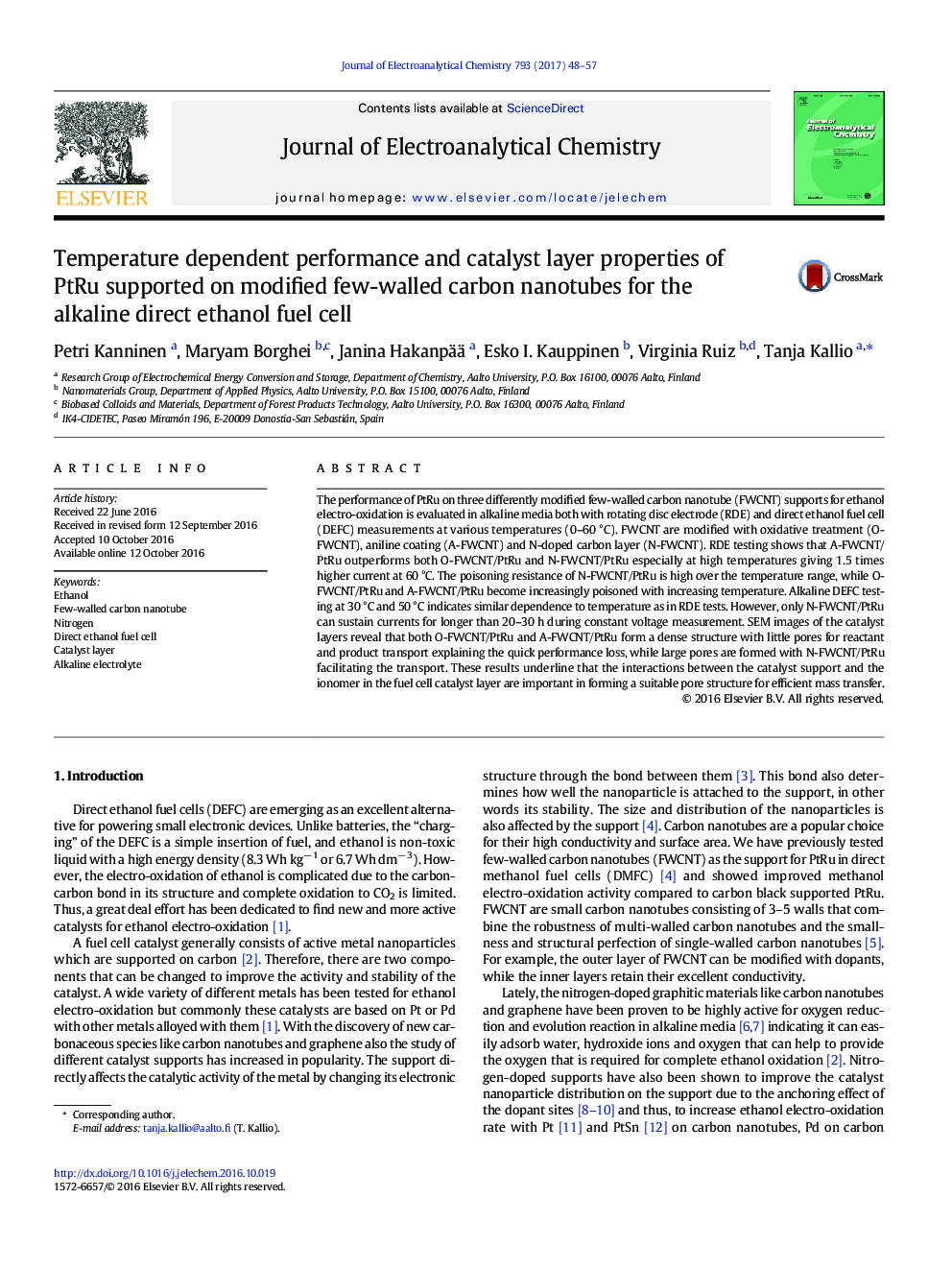| Article ID | Journal | Published Year | Pages | File Type |
|---|---|---|---|---|
| 4907898 | Journal of Electroanalytical Chemistry | 2017 | 10 Pages |
â¢Ethanol oxidation studied with PtRu on various modified CNT supportsâ¢Aniline-coated CNT support improves PtRu ethanol oxidation activity at 0-60 °C.â¢N-doped CNT support improves poisoning resistance of PtRu at 20-60 °C.â¢High performance and stability for N-doped CNT supported PtRu in ethanol fuel cell.â¢N-doped CNT form a more porous catalyst layer than the other catalyst supports.
The performance of PtRu on three differently modified few-walled carbon nanotube (FWCNT) supports for ethanol electro-oxidation is evaluated in alkaline media both with rotating disc electrode (RDE) and direct ethanol fuel cell (DEFC) measurements at various temperatures (0-60 °C). FWCNT are modified with oxidative treatment (O-FWCNT), aniline coating (A-FWCNT) and N-doped carbon layer (N-FWCNT). RDE testing shows that A-FWCNT/PtRu outperforms both O-FWCNT/PtRu and N-FWCNT/PtRu especially at high temperatures giving 1.5 times higher current at 60 °C. The poisoning resistance of N-FWCNT/PtRu is high over the temperature range, while O-FWCNT/PtRu and A-FWCNT/PtRu become increasingly poisoned with increasing temperature. Alkaline DEFC testing at 30 °C and 50 °C indicates similar dependence to temperature as in RDE tests. However, only N-FWCNT/PtRu can sustain currents for longer than 20-30 h during constant voltage measurement. SEM images of the catalyst layers reveal that both O-FWCNT/PtRu and A-FWCNT/PtRu form a dense structure with little pores for reactant and product transport explaining the quick performance loss, while large pores are formed with N-FWCNT/PtRu facilitating the transport. These results underline that the interactions between the catalyst support and the ionomer in the fuel cell catalyst layer are important in forming a suitable pore structure for efficient mass transfer.
Graphical abstractDownload high-res image (254KB)Download full-size image
